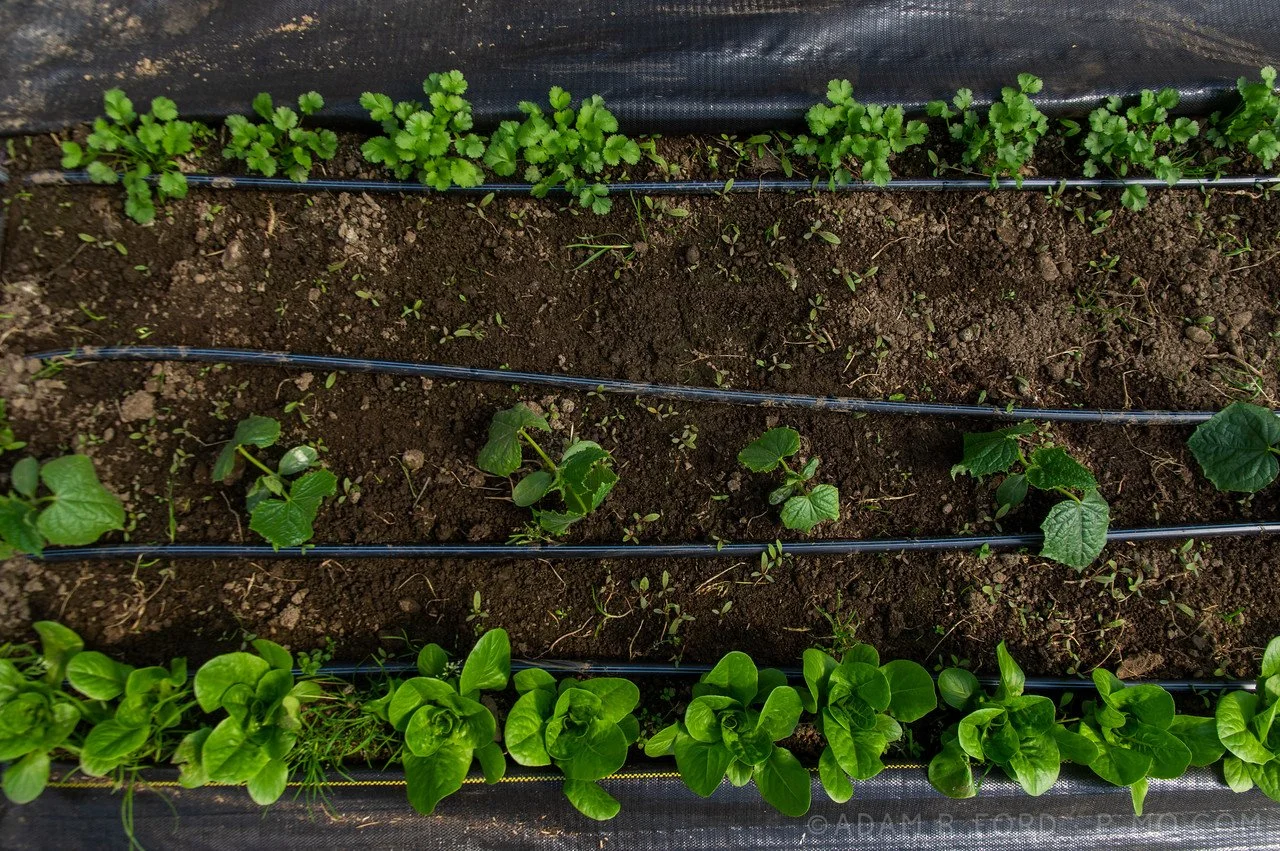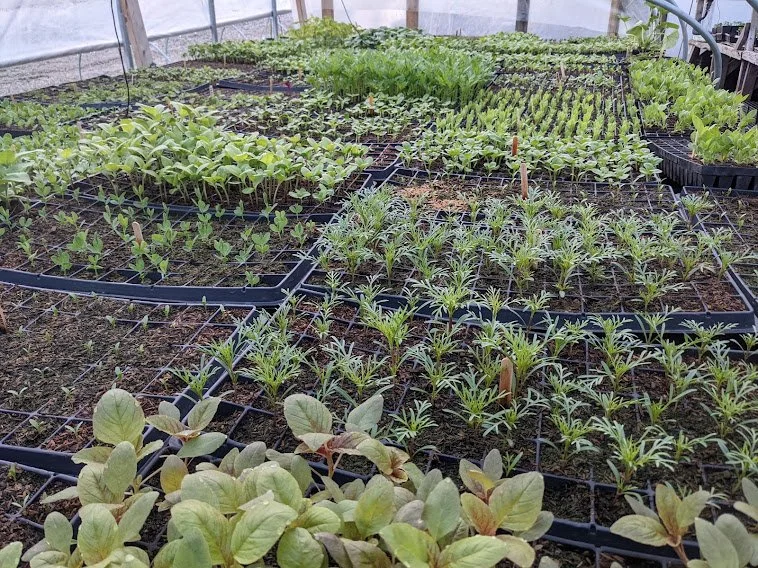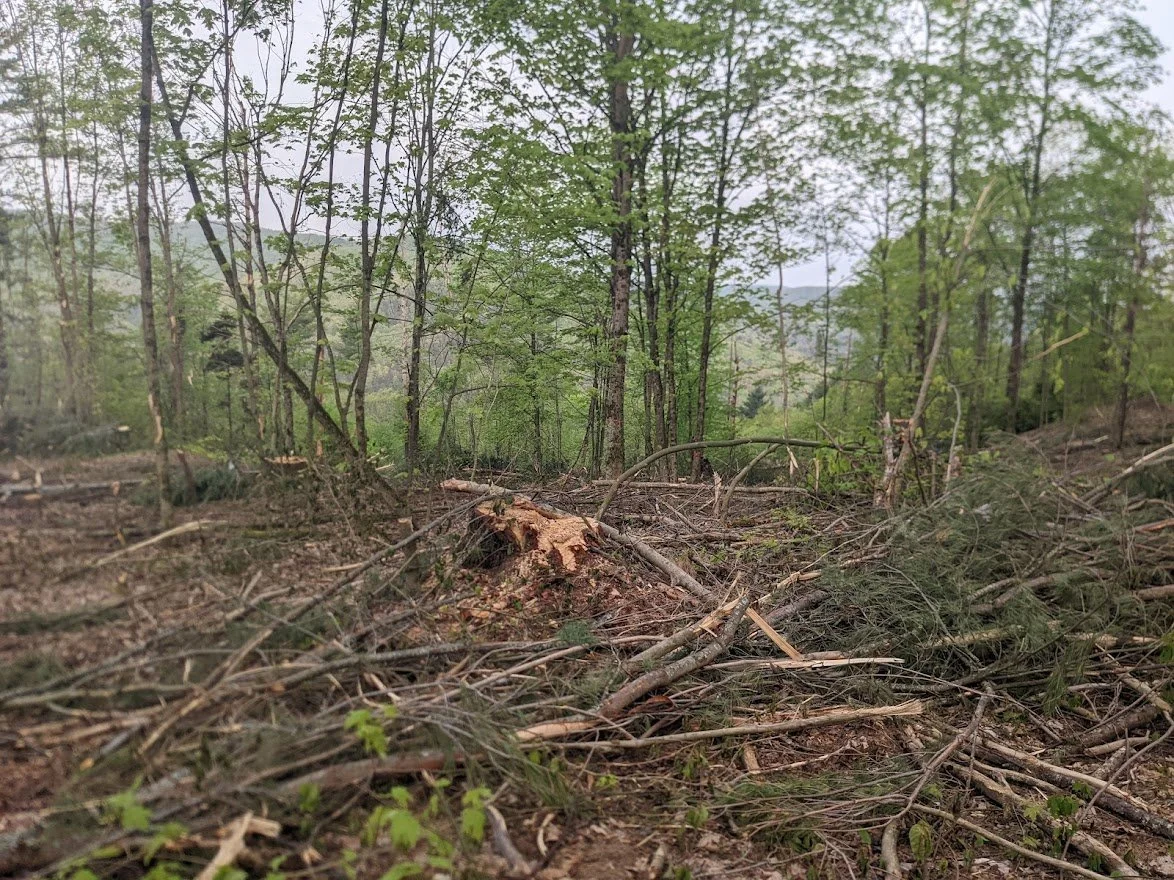15th Week of the Winter/Spring CSA season: Week of May 25th
Sign Up For The Summer CSA Season
The Summer CSA Season is right around the corner! If you want to participate in that season, and haven’t already signed up, do that now. If you aren’t sure if you are signed up for that season, just reach out, and we can let you know, or sign you up if that’s easier.
Outdoor greens looking really nice, photo by Adam Ford
This Week’s Availability
This week we will have fresh red radish bunches, red beets, orange carrots (Juniper Hill), rainbow carrots (Juniper Hill), red and yellow onions (Juniper Hill), mesclun mix, arugula, baby lettuce, baby bok choi, pea shoots, spinach, salad turnips, mini romaine lettuce, cilantro, rhubarb, and frozen heirloom/beefsteak tomatoes.
Beginning this week we will have MANY plants that will be available as CSA items and for extra purchase. Unfortunately we aren’t able to manage listing and distributing plants through the online ordering system since we have such an extensive inventory to keep up with: if you’d like to choose any plants as CSA items, or buy extras, this would be a good week to stop by the farm.
Ordering closes at noon on Tuesdays for Wednesday bags, and at midnight on Wednesday for Friday bags.
You do not need to fill out the form if you plan to come to the barn on Wednesdays or Thursdays to pick out your items yourself.
The land across Shunpike Road began a major logging operation this week…we’re sorry if it was an overwhelming surprise for anyone on their drive to pick up from the farm. If you want to make sure that you don’t have to reverse on Shunpike to allow a truck like this to pass by, plan to pick up anytime after 3:30 pm: the trucks are not loaded after that time. photo by Ryan Fitzbeauchamp
Freshly transplanted basil in the BFG. And beautiful beets to the left…the plants in this tunnel look superb! photo by Ryan Fitzbeauchamp
This photo of cucumbers and lettuce was taken 3 weeks ago, shortly after planting, photo by Adam Ford
The same plants last week in Mid may: lettuce and cilantro are growing but cukes were a little slow to establish. I was starting to get a little worried about them! photo by Adam Ford
And here are the same plants on May 20th! The cucumbers are really starting to take off. Photo by Ryan Fitzbeauchamp
Flowers on the blueberry bushes in early morning. Photo by Ryan Fitzbeauchamp
Strawberry flowers and fruit! We learned a lot from growing strawberries last year and made a few small adjustments. This years crop looks outstanding. photo by Ryan Fitzbeauchamp
Salad turnips! If these are new to you, they’re like a radish, but sweeter flavor and creamier texture. The skin has a subtle radish-like bite to it…you can leave the skin on or peel it off. They can be eaten raw, whole, sliced, shredded, sauteed, grilled, baked, roasted…even the greens can make yummy tender cooking greens if you want to use every little bit. photo by Adam Ford
All of these onions and shallots—about 10,000 plants total—will be planted out this week. (Since we plant two plants in the same hole, it feels like we’re only planting 5,000 plants.) Photo by Ryan Fitzbeauchamp
Seedlings grown for pre-orders and CSA items look great this year, photo by Ryan Fitzbeauchamp
And seedlings for our farm’s pick-your-own flower garden are coming along too! Growing that garden last year was one of our highlights, and we’re all super excited for this year’s flower garden to take shape!
Of the 7 beds of broccolini we transplanted this spring, 5 are growing very well, photo by Ryan Fitzbeauchamp
But the top two rows didn’t make it through last weeks’ heat wave. We covered the broccolini with row cover to protect from flea beetles, but the combination of the additional heat retention and the fabric chafing on the plants caused most of those two beds to perish. We’ll plant other crops in those beds and learn from the mistake for next year! Even when we think we know enough to succeed, working with other living organisms is still humbling. Photo by Ryan Fitzbeauchamp
Rhubarb is ready this week! This patch was planted in 2012, the first year we started growing on this land. Many of the plants originally came from my childhood neighbor, George Ball, who passed away in 2018. He kept a large garden that was one of the seeds of my love for gardening. The rest of the plants came from Anthill Farm in Pennsylvania, friends of ours when we started a CSA down there. Unfortunately, when we planted the rhubarb in 2012, we also inadvertently planted a lot of wild thorny brambles with them. We’ll plan to mow those down before harvesting. photo by Ryan Fitzbeauchamp
Last fall we divided our rhubarb crowns to create another patch. We hope to keep this patch well mulched with straw in order to keep it clean and make it very easy to harvest.
I love watching the rye-vetch cover crop grow in May. Photo by Ryan Fitzbeauchamp
The logging operation across the street has provided great morning entertainment for our kids to watch before school: The feller-buncher, a.k.a. feller-muncher. This machine harvests a tree in about 2 seconds, lifts it up, and places it down in a pile of harvested trees for the skidder to drag. It’s unbelievable to see how 3 people, with 3 pieces of specialized foresty equipment, can quickly harvest, limb, skid, cut to length, and pile an enormous amount of logs. The loggers are removing the older white pine trees that are beginning to die out, and a beautiful maple understory will almost certainly grow very quickly in the next 20 years. All the harvested pine logs will be used to make plywood or wood pellets. While it’s shocking-and a bit heartbreaking—to see that forest change so rapidly, it also seems important to source our energy and lumber from local renewable resources. On our own farm for example, we continue to prioritize wood pellet and electric (solar powered) heating infrastructure over fossil fuel heat. Photo by Ryan Fitzbeauchamp
The dramatically changed landscape in our neighbor’s forest will provide many new opportunities for wildlife habitat while the maple understory matures. When our kids are my age, they might enjoy going for a walk or ski through the logging trails in the beautiful maple forest—if the land doesn’t become developed for housing. In the meantime, the extensive piles of slash, debris, and soil disturbance is a reminder of how incredibly capable humans are at altering our landscape…for better or worse. Photo by Ryan Fitzbeauchamp



















